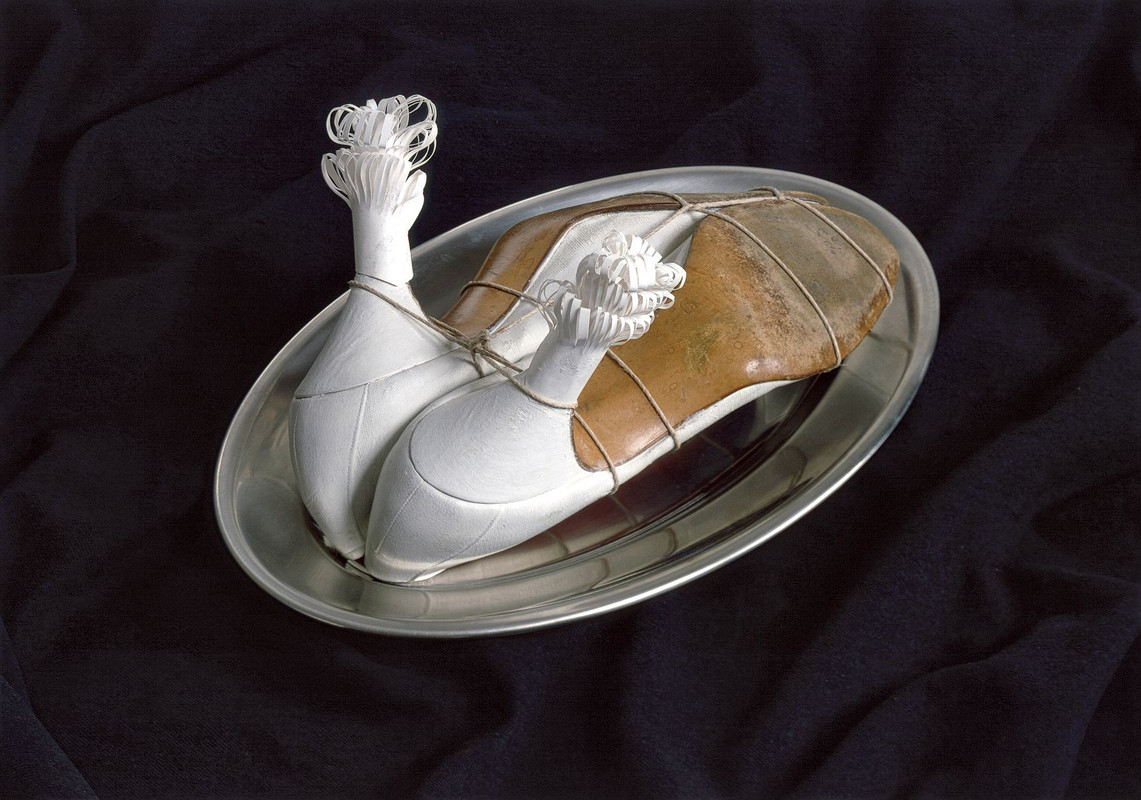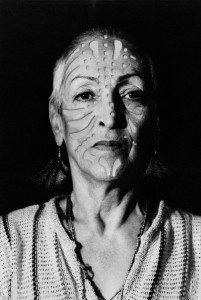TRACES: Méret Elisabeth Oppenheim
 Today is the occasion to bear in mind the Surrealist artist and photographer Méret Elisabeth Oppenheim (6/10/1913-15/11/1985). She is probably best known for the fur teacup and spoon, one of the most recognized of Surrealist Objects. This column is a tribute to artists, living or dead, who have left their mark in Contemporary Art. Through documents or interviews, starting with: moments and memories, we reveal out from the past-unknown sides of big personalities, who left their indelible traces in time and history…
Today is the occasion to bear in mind the Surrealist artist and photographer Méret Elisabeth Oppenheim (6/10/1913-15/11/1985). She is probably best known for the fur teacup and spoon, one of the most recognized of Surrealist Objects. This column is a tribute to artists, living or dead, who have left their mark in Contemporary Art. Through documents or interviews, starting with: moments and memories, we reveal out from the past-unknown sides of big personalities, who left their indelible traces in time and history…
By Dimitris Lempesis
 Oppenheim was born in Berlin in 6/10/13 and spent her childhood between Switzerland and Germany. She came from a colourful background, her father was a doctor interested in the works of Swiss psychiatrist Carl Jung, her aunt was married with Herman Hesse and her grandmother was an artist who studied painting but later became a well known writer of novels and children stories. She left school at 17, and was introduced to some of the artists of the New Objectivity movement (an art movement which grew out of Germany in the ‘20s, and was in direct opposition to German expressionism). Oppenheim initially began making pen and ink drawings, and experimented with watercolors. In 1932, Oppenheim arrived in Paris and enrolled briefly at the Academic de la Grande Chaumiere. Soon bored by the academic life, she started spending her days in galleries and cafes, hearing about the popular art movement known as Surrealism. It was in Cafe du Dome in 1933 that she met the Swiss artist Giacometti, and through him Jean Arp, Kurt Seligmann, Max Ernst and Sophie Taeuber. Arp and Giacometti became her first mentors, and Ernst and Man Ray became close friends. Giacometti encouraged Oppenheim to create her first Surrealist object; she did so, and called it “Giacometti’s Ear”. She was invited to exhibit at the Salon des Surindependents (27/10-26/11/33). After this, she frequently went to Surrealist meetings, and became closely identified with the movement, also in 1933, she had her first solo exhibition at the Galerie Schulthess, Basel. Oppenheim found the Surrealist circle a suitable forum to assert her own freedom. In 1933 she wrote on the side of a drawing:“Finally! Freedom! The harpoons are flying. The rainbow is in the streets”. One day, when Oppenheim wore a fur-covered bracelet, Picasso remarked that one could cover anything with fur, to which she replied, “Even this cup and saucer”. Soon after, when Andre Breton, the Surrealist leader, asked her to participate in a Surrealist exhibition dedicated to ordinary objects, Oppenheim went to a department store and bought a teacup, saucer and spoon. She covered the items with fur. In doing so, she said she wanted to transform items typically associated with feminine decorum into sensuous tableware. It also provoked the viewer into imagining what it would be like to drink out of a fur-lined cup. This individual work bought Oppenheim huge fame. Some say it may have hindered her subsequent development as an artist. She attended art school in order to try and live up to her new found fame. However her next 17 years were dogged by constant battles with depression. Meret is known also for her emancipatory attitude to life and indicative of her involvement in the surrealist circles of the ’30s was a series of nude photographs taken by Man Ray, most notably “Erotic Veiled” that shows Meret standing behind a machine with a large wheel. In 1937 Oppenheim returned to Switzerland, and this period marked an artistic crisis in her life. She only worked in bursts and destroyed most of what she produced. She took part in an exhibition of fantastic furniture in Galerie Rene Drouin in Paris in 1939, along with Max Ernst and Leonor Fini. During the ‘40s, she created very little, only beginning to work seriously again in the ‘50s. When she came out the other end of her crisis, she remarked “Nobody gives you freedom, you have to take it”. In 1959, Meret organized her most copied performance, “Cannibal Feast” at the last International Surrealist Exhibition in Paris, where the participants were invited to eat food served on a naked woman’s body. It was criticised for depicting women as objects of consumption. Oppenheim insisted, as a staunch feminist, that it was meant to represent fertility. She wanted to pay tribute to women’s close relationship with the earth elements by playing with the concepts of nature and civilization. In a speech in 1974, accepting an Art award from the City of Basel, she referred to the difficulties faced by a woman who has decided to live as an artist: “It starts with what seem like external things. People are used to the idea that male artists live just as they please and the bourgeoisie looks the other way. But let a woman do the same, and all eyes are upon her”. In 1983 Oppenheim designed “Tour-fontaine” in Berne. This is a tall concrete column wrapped in grass, over a small water course. In the last twenty years of her life, Oppenheim created an abundance of paintings, drawings, sculpture, jewellery and clothes designs. Oppenheim died 15/11/85. A major retrospective of her work was held at the Moderna Museet in Stockholm in 1967. In 1996, the Solomon R. Guggenheim Museum mounted Oppenheim’s first major museum exhibition in the U.S.A. and in 2013, a retrospective of Oppenheim’s work opened at the Martin-Gropius-Bau in Berlin.
Oppenheim was born in Berlin in 6/10/13 and spent her childhood between Switzerland and Germany. She came from a colourful background, her father was a doctor interested in the works of Swiss psychiatrist Carl Jung, her aunt was married with Herman Hesse and her grandmother was an artist who studied painting but later became a well known writer of novels and children stories. She left school at 17, and was introduced to some of the artists of the New Objectivity movement (an art movement which grew out of Germany in the ‘20s, and was in direct opposition to German expressionism). Oppenheim initially began making pen and ink drawings, and experimented with watercolors. In 1932, Oppenheim arrived in Paris and enrolled briefly at the Academic de la Grande Chaumiere. Soon bored by the academic life, she started spending her days in galleries and cafes, hearing about the popular art movement known as Surrealism. It was in Cafe du Dome in 1933 that she met the Swiss artist Giacometti, and through him Jean Arp, Kurt Seligmann, Max Ernst and Sophie Taeuber. Arp and Giacometti became her first mentors, and Ernst and Man Ray became close friends. Giacometti encouraged Oppenheim to create her first Surrealist object; she did so, and called it “Giacometti’s Ear”. She was invited to exhibit at the Salon des Surindependents (27/10-26/11/33). After this, she frequently went to Surrealist meetings, and became closely identified with the movement, also in 1933, she had her first solo exhibition at the Galerie Schulthess, Basel. Oppenheim found the Surrealist circle a suitable forum to assert her own freedom. In 1933 she wrote on the side of a drawing:“Finally! Freedom! The harpoons are flying. The rainbow is in the streets”. One day, when Oppenheim wore a fur-covered bracelet, Picasso remarked that one could cover anything with fur, to which she replied, “Even this cup and saucer”. Soon after, when Andre Breton, the Surrealist leader, asked her to participate in a Surrealist exhibition dedicated to ordinary objects, Oppenheim went to a department store and bought a teacup, saucer and spoon. She covered the items with fur. In doing so, she said she wanted to transform items typically associated with feminine decorum into sensuous tableware. It also provoked the viewer into imagining what it would be like to drink out of a fur-lined cup. This individual work bought Oppenheim huge fame. Some say it may have hindered her subsequent development as an artist. She attended art school in order to try and live up to her new found fame. However her next 17 years were dogged by constant battles with depression. Meret is known also for her emancipatory attitude to life and indicative of her involvement in the surrealist circles of the ’30s was a series of nude photographs taken by Man Ray, most notably “Erotic Veiled” that shows Meret standing behind a machine with a large wheel. In 1937 Oppenheim returned to Switzerland, and this period marked an artistic crisis in her life. She only worked in bursts and destroyed most of what she produced. She took part in an exhibition of fantastic furniture in Galerie Rene Drouin in Paris in 1939, along with Max Ernst and Leonor Fini. During the ‘40s, she created very little, only beginning to work seriously again in the ‘50s. When she came out the other end of her crisis, she remarked “Nobody gives you freedom, you have to take it”. In 1959, Meret organized her most copied performance, “Cannibal Feast” at the last International Surrealist Exhibition in Paris, where the participants were invited to eat food served on a naked woman’s body. It was criticised for depicting women as objects of consumption. Oppenheim insisted, as a staunch feminist, that it was meant to represent fertility. She wanted to pay tribute to women’s close relationship with the earth elements by playing with the concepts of nature and civilization. In a speech in 1974, accepting an Art award from the City of Basel, she referred to the difficulties faced by a woman who has decided to live as an artist: “It starts with what seem like external things. People are used to the idea that male artists live just as they please and the bourgeoisie looks the other way. But let a woman do the same, and all eyes are upon her”. In 1983 Oppenheim designed “Tour-fontaine” in Berne. This is a tall concrete column wrapped in grass, over a small water course. In the last twenty years of her life, Oppenheim created an abundance of paintings, drawings, sculpture, jewellery and clothes designs. Oppenheim died 15/11/85. A major retrospective of her work was held at the Moderna Museet in Stockholm in 1967. In 1996, the Solomon R. Guggenheim Museum mounted Oppenheim’s first major museum exhibition in the U.S.A. and in 2013, a retrospective of Oppenheim’s work opened at the Martin-Gropius-Bau in Berlin.







